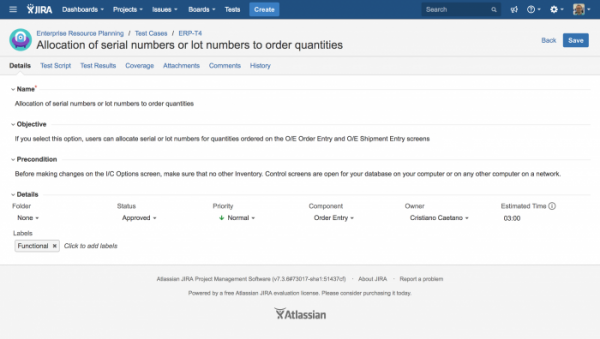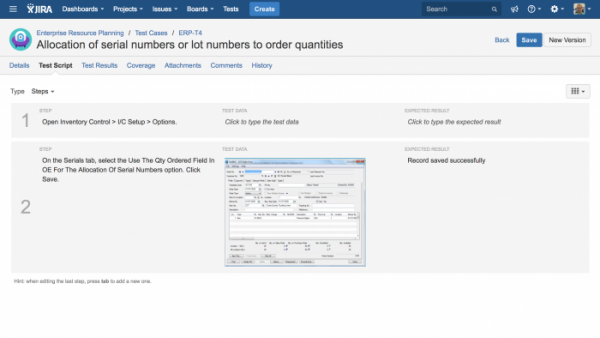Five best practices for managing test cases in Jira
One of the most important processes in your testing lifecycle is the creation and maintenance of test case specifications. This blog looks at five ways to get your test cases running more effectively in Jira with Adaptavist Test Management.
A single test case contains step-by-step procedures for executing a test. It should provide traceability with its requirements and describe the environmental needs and the pass/fail criteria. Adaptavist Test Management for Jira leverages the power of Jira to create test cases that increase productivity, reduce re-testing and minimise duplication.
1. Keep test cases simple and easy to understand
While great for creating tasks and issues, Jira on its own wasn't designed for Test Management. Traditional Jira workflows don't fit with most test case models.
By using Adaptavist Test Management, test cases can be created as separate entities in Jira so they exist outside of the traditional task/workflow structure. This means that you can keep them clear, simple and distinct, while still benefiting from Jira's intuitive user interface and ease-of-use.

2. Standardise naming conventions
As business needs grow, scaling a test library can become a challenge. Ensuring a meaningful and standardised test case naming convention is one way you can keep test libraries healthy. Adaptavist Test Management for Jira clearly displays the names of your test cases on grids. It also ships with an 'as-you-type' search filter that, combined with your consistent naming convention, lets users easily filter to the relevant test case(s).

3. Describe detailed steps and include data
A well written test case specification should clearly describe the steps, test data and the expected result(s) of the application or system under test. Adaptavist Test Management allows you to detail test steps, additionally it allows you to reuse steps from other test cases, cutting down on time spent writing individual test cases and ensuring standardisation. The simple, functional test case interface also allows users to drag and drop test steps.

4. Ensure traceability
Tracing a test case from start to go-live is a critical part of any testing lifecycle. Enhancing Jira with Adaptavist Test Management enables you to establish clear traceability between test cases, test runs, test plans and issues - all right inside Jira - ensuring nothing is missed between teams.

5. Design a reusable and modular test case library
Test case libraries can become large, making them hard to navigate and maintain. Testers and test managers can organise test case libraries using hierarchical folders. Luckily, Adaptavist Test Management allows you to use hierarchical folders as well as reuse test cases and test scripts across all your projects, releases and sprints. It's also designed to let you reuse test steps between test cases.

If you're not already using Adaptavist Test Management, start a free trial today and discover how can help your team dramatically improve your test management and productivity right inside Jira.







